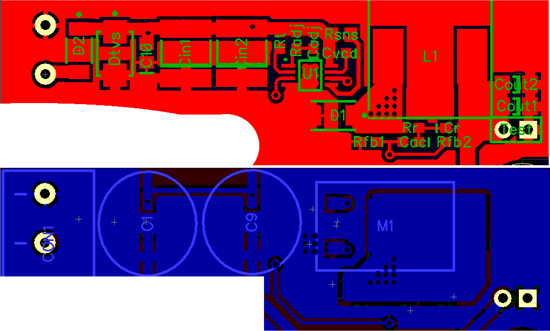Hello all,
I am seeking some advice on what might cause the problem described:
I am using a stock webbench design for lm25085, 5-40vin, 4vout @ 2amp, with low-op-ripple option.
When going to low-op-ripple, the IC is specified as the LM25085A version, but I only have LM25085. Hopefully I can still use the low-op-ripple circuit with that device?
Added a 20W 3R resistor to vout (to test load condition @ approx. 1.2amps). Then increased the input voltage from 5 volts upwards. At about 16.5volts, the vout shutsdown to zero. As soon as I reduce the vin below 16v, the vout comes back immediately. Nothing is getting hot! (Well, only the vout test-load resistor gets warm of course)
If I remove the load resistor, then I can run the LM25085 up to vin 30v and the vout is stable.
Any ideas what this could be? Based on the facts, I was thinking it could be the LM25085 going into shutdown mode at 16.5V... but why it would do that I am not sure? The Rt resistor is as specified at the webbench, 46K4. I am suspicious that because the webench changed my ic choice to the lm25085A type when it switches to low-op-ripple design, then perhaps the difference in feedback voltage (0.9v instead of 1.25v) means I need to change some values in the low-op-ripple components, and maybe they cause the problem?
I do have aTVS on the vin, specified to hold voltage at 26Vin. It might be faulty, but I think if that was kicking in, I would see a sharp rise in current consumption at the power supply... well anyway, before I start hacking the board apart it would be great to hear any other ideas what might cause this.
Thanks, Michael.


